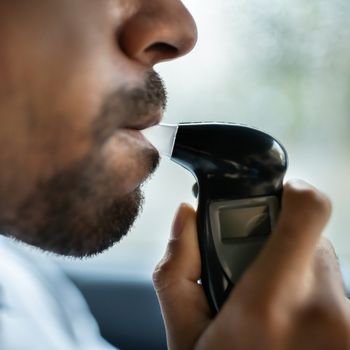 When a driver commits a DUI or OUI offense, we assume their license is temporarily suspended following the incident. Yet today, these situations are increasingly more complex. States have implemented ignition interlock device (IID) laws intended to monitor behavior behind the wheel.
When a driver commits a DUI or OUI offense, we assume their license is temporarily suspended following the incident. Yet today, these situations are increasingly more complex. States have implemented ignition interlock device (IID) laws intended to monitor behavior behind the wheel.
Connecticut initiated its IID law in 2015, requiring drivers with a second or further OUI offense to have their cars outfitted with this device. Since then, the state has required all people whose licenses have been suspended for this offense to use an IID for a period of time.
Whether you’re in this scenario or seeking information, here’s what you should know.
What Is an Ignition Interlock Device?
An ignition interlock device gets installed in your car after a drunk or drugged driving offense. In order to drive, you need to blow into the IID to start the engine. If a certain percentage of alcohol or drugs is detected, the IID prevents the car from turning on. A report is also sent to the Department of Motor Vehicles (DMV) through a chip.
However, this is not the only time you’ll need to blow into the IID. At various points in your journey, you’ll likely be prompted for a rolling retest to ensure you’re not under the influence.
When an IID is installed in your car in Connecticut:
- It prevents the engine from starting if it senses a BAC of .025 or higher, although this amount may be lowered if you are under age 21.
- The state requires an IID to be installed into all vehicles that you own and operate.
- Every 25 to 30 days, you’re required to bring the device(s) to the installer for calibration.
- Failing to follow through with routine calibration can result in a license suspension.
- Your license may also be suspended if you tamper with the IID, drive a vehicle without an IID installed, attempt to remove the device yourself or have someone take the breathalyzer for you.
- The IID notifies the DMV if you fail to submit a rolling retest or have a BAC of .05 or higher.
- An IID isn’t free; you’ll need to pay $175 to have your license reinstated, plus $100 for IID administration.
License Suspension and Using an IID
Despite the law’s initial intent, drivers with an arrest related to a DUI or OUI event – not a conviction – are often required to have an IID installed. Arrests involve a BAC of .08 for adults 21 and over and .02 for those under 21.
An IID is part of having your driving privileges restored. To get to this point, you’ll first apply for a Special Operator’s Permit. This should be done before your license suspension ends. For a timeline, suspension begins 30 days after your arrest and lasts 45 days. At this point, your license can be reinstated to operate your vehicle, as long as the IID is installed.
From here, length of IID use varies. For individuals under 21, you’ll be expected to have the device in your car for a year with your first offense, two years for your second offense and three years for your third offense. For those 21 and older:
- First Conviction: 45-day suspension, followed by at least a year of IID use.
- Second Conviction: Along with a 45-day suspension, you’re required to drive with the IID for three years with restricted first-year trips.
- Third Conviction: Your license gets permanently suspended. However, you have the option to appeal this decision after three years.
Additionally, you’ll be expected to have an IID installed in your car if you refuse an OUI test in Connecticut. This includes breathalyzer, chemical and urine forms of testing. Along with an OUI offense or conviction, the state requires drivers who have committed vehicular assault or manslaughter to install an IID.
In all cases, the IID period begins from the date the state restores your license – not once you have it installed. However, this will change if you receive a new license suspension while using an IID. In this case, the date is reassigned in relation to your latest incident.
Are you in the process of getting your driver’s license reinstated after an OUI or DUI offense? DaSilva’s Auto Body can install an ignition interlock device in your car. To schedule an appointment, contact us today.




